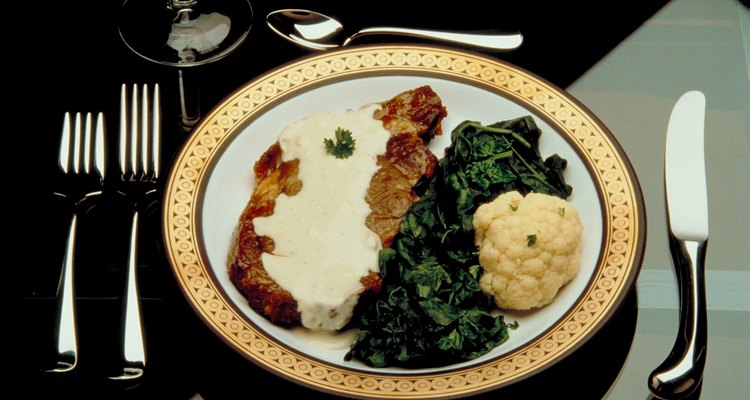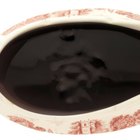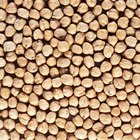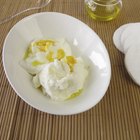
White gravy, the kind served with biscuits and country-fried steaks, is versatile -- which is why it's one of the five mother sauces of French cuisine. Biscuit gravy, a simple roux-and-milk sauce also known as bechamel, is the base for thousands of classic French sauces, such as creme, Mornay and soubise. You can liken white gravy to a blank slate, because it is able to take on just about any flavor you add to it. Substituting yogurt for milk gives the gravy a pleasant tanginess.
Step 1
Add an amount of full-fat plain yogurt equal to the amount of milk you would normally use to a mixing bowl. Don't drain the whey, the liquid sitting on top of the yogurt, before adding it to the mixing bowl. Reserve about 1 cup of yogurt in the refrigerator.
Step 2
Sprinkle all-purpose flour on the yogurt. Use a ratio of one part yogurt to 1/16 part flour, or 1 tablespoon of flour for every cup of yogurt, to prevent curdling.
Step 3
Whisk the yogurt until smooth and free of lumps and scrape it into a heavy-bottomed saucepan. Set the heat to low and stir the yogurt occasionally while you work on the gravy in a separate saucepan.
Step 4
Add half as much roux as you normally would to the pan you're making the gravy in. If you're using rendered fat left in the pan after cooking meat to make the roux, just add half as much flour as you normally would.
Step 5
Cook the roux over medium heat for about two minutes, whisking occasionally or stirring with a wooden spoon to mix the fat and flour. Stir the yogurt once more and pour it in the pan with the roux.
Step 6
Whisk the yogurt and roux together until incorporated. Attach a candy thermometer to the pan, or check the temperature by inserting a probe thermometer in the center of the gravy.
Step 7
Adjust the heat on the stove to maintain a temperature between 150 and 175 degrees Fahrenheit. Yogurt curdles at around 175 to 190 F, depending on the fat content, so you want to keep it in the 150- to 175-F range.
Step 8
Skim the surface of the gravy with a spoon to remove froth and the dark, caramelized dairy solids, and stir frequently. If you see the yogurt starting to curdle, turn off the heat. Whisk in the yogurt you reserved in the refrigerator, a few tablespoons at a time, until it comes back together. Turn the heat back on, but a little lower than you had it when the yogurt curdled.
Step 9
Cook the gravy until the starch cooks out, about 45 minutes. Taste the gravy. A roux-based sauce or gravy is good to go when you can't detect any graininess on your palate. Season the gravy to taste.
Related Articles

How to Substitute for Cognac in Your ...

Cooking Yogurt Without Curdling It

How to Freeze Greek Yogurt

How to Cook With Lactaid

How to Make Gravy From Gravy Mix

How to Make Corned Beef Gravy

How to Freeze Yogurt Sauce

How to Make Frosting Using All-Purpose ...

What Is Ratio for Cornstarch & Water to ...

How to Reduce Chicken Stock to a Third

How to Make Crab Bisque

How to Mix Yogurt With Unflavored ...

How to Make Whipped Frosting for Cake ...

How to Substitute Potato Starch for ...

How to Roast Chickpea Flour

How to Cook Farina in Milk

Can You Reduce Age Spots With Yogurt?

How to Make Simple Homemade Gravy

How to Substitute for Cognac in Your ...

How to Make Cake Frosting Into a ...
References
Warnings
- Don't add acidic liquids to the gravy. Foods with low pH, such as lemon juice or wine, make the yogurt curdle.
- Low-fat and fat-free yogurts don't hold together well and curdle quickly when exposed to heat.
Writer Bio
A.J. Andrews' work has appeared in Food and Wine, Fricote and "BBC Good Food." He lives in Europe where he bakes with wild yeast, milks goats for cheese and prepares for the Court of Master Sommeliers level II exam. Andrews received formal training at Le Cordon Bleu.
Photo Credits
Jupiterimages/Photos.com/Getty Images